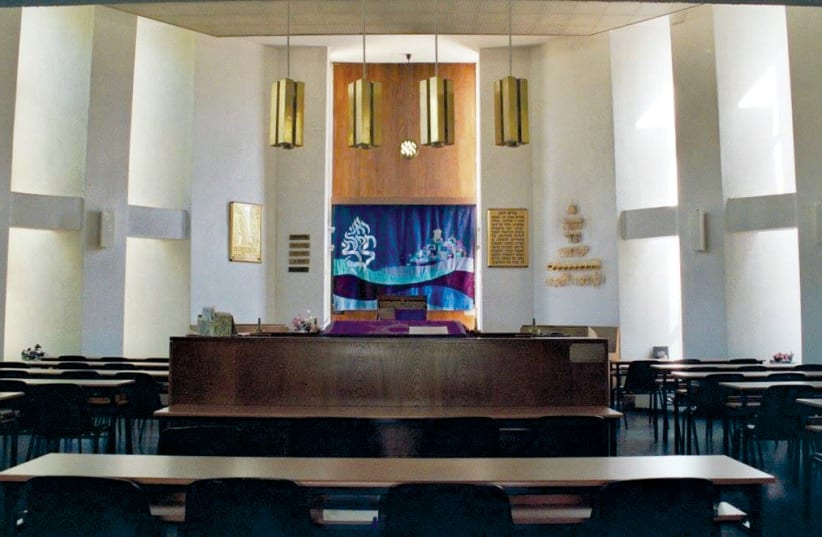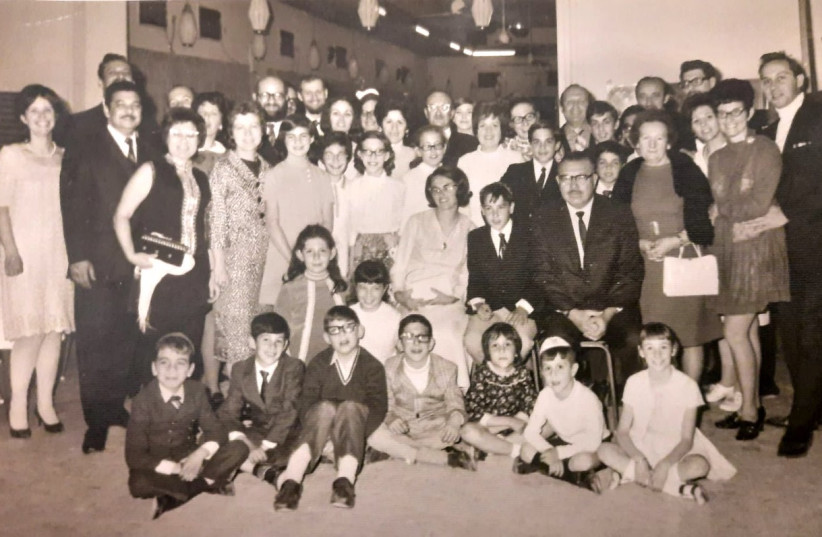With the upcoming 75th anniversary of Israel’s establishment as a state, it is wonderful to reflect back on some of the milestones, especially when it comes to the arrival of new immigrants.
I heard one heartwarming story from my neighbors, Marian and Jason Propp. Their story involves a group of new immigrants who came to live in Petah Tikva 50 years ago. Last October, they attended a special event at the Young Israel of Petah Tikva Synagogue. Around 90 people, young and old, gathered to commemorate their aliyah, which began after the Six Day War when a wave of young academics made aliyah from the US, Canada, France , Portugal, and England.
Due to the recession in Israel that took place before the war, there were two large apartment buildings available on Andersen Street in Petah Tikva. The buildings were near the Petah Tikva Zoo and did not attract the locals. The contractor, therefore, sold the buildings to the Jewish Agency.
The arrival of immigrants to Petah Tikva after the Six Day War
The apartments were allotted to returning academic Israelis and new immigrants.
A number of the newcomers who arrived were observant and began looking for a place to pray. They began meeting in people’s homes. Later, they moved the minyan to a nearby old-age home. As more and more observant young families moved into the neighborhood, the minyan had to find larger premises and eventually moved to the Ramat Verber school.
Most of the new olim had left their parents and extended families behind in their countries of origin. Lacking a family support system, they began to bond into a wonderful large family and kehila. As the community grew, they realized that they needed to establish themselves as a permanent entity and find a venue, a synagogue to be headed by their own rabbi and spiritual leader.
The city of Petah Tikva provided land for the synagogue, and the group began to raise funds for the erection of a beit knesset in the neighborhood. Over time, they were fortunate enough to recruit a number of successful rabbis, such as Rabbis Berglas, Fass and Rabbi Brenner, who is still the rabbi of the community today.
“What was special about the community was the cohesiveness. We celebrated all the simchas together – trips, weekends, kiddushim, family events and holiday celebrations. We also organized classes and lectures. We were also there for each other at difficult times. We were more than a shul, we were a family.”
Judy Belzer
“What was special about the community was the cohesiveness. We celebrated all the simchas together – trips, weekends, kiddushim, family events and holiday celebrations. We also organized classes and lectures. We were also there for each other at difficult times. We were more than a shul, we were a family,” said Judy Belzer, another one of the founders of the community.
She explained how the children of the community were nurtured in a wonderful environment. “They were able to integrate into Israeli society and, at the same time, maintain a closeness with each other.”
As the synagogue developed, they set up their own youth activities. The older children in the community became the counselors. “Strong bonds of friendships were formed which have lasted a lifetime. Amazingly 13 marriages were formed from within the same community!” Belzer said.
As time passed, the families grew, and there was a need for more spacious housing. As the next generation got married, they moved away and so did many of the original founding community members. Nevertheless, they remained in regular contact with one another and with those who remained.
“Today, the community remains very much in touch. We have formed our own WhatsApp group, and we share photos and updates about our families and all occasions. We are proud of our achievements in the way in which our aliyah has contributed to Israeli society and the building of the state, something which our children, grandchildren and great-grandchildren will continue to do,” she said.
Belzer added that after five decades, some of the original members of the community are passing away. “Sadly, we have been meeting at funerals and shiva calls. At each shiva, the children of the original synagogue still come and share memories about the wonderful years at the shul. At one of the recent shivas, for Bernie Ratowitz, the group decided to arrange a reunion of former members.”
And so it was that on October 31, 2022, up to 90 people gathered at the Young Israel Synagogue to commemorate the formation of their very special community and its special legacy. The entire evening was conducted in Hebrew, a reflection of how well the next generation had integrated into Israeli society.
“As many of us had at least one or two more children after making aliya, we referred to it as ‘internal immigration.’ Most of the families now have three generations of Sabras,” Marian Propp explained. She went on to tell me, “There are even a few of the offspring who make up a fourth generation. As far as we know, all the families have remained in Israel; none have gone back to the Diaspora.”
The Petah Tikva story is indeed inspiring, especially now during the current turbulent times through which we are living. The community is an example of how the messianic prophecy of kibbutz galuyot (ingathering in of the exiles) has taken place and continues to take place in the 75-year-old miracle that is the State of Israel. ■

